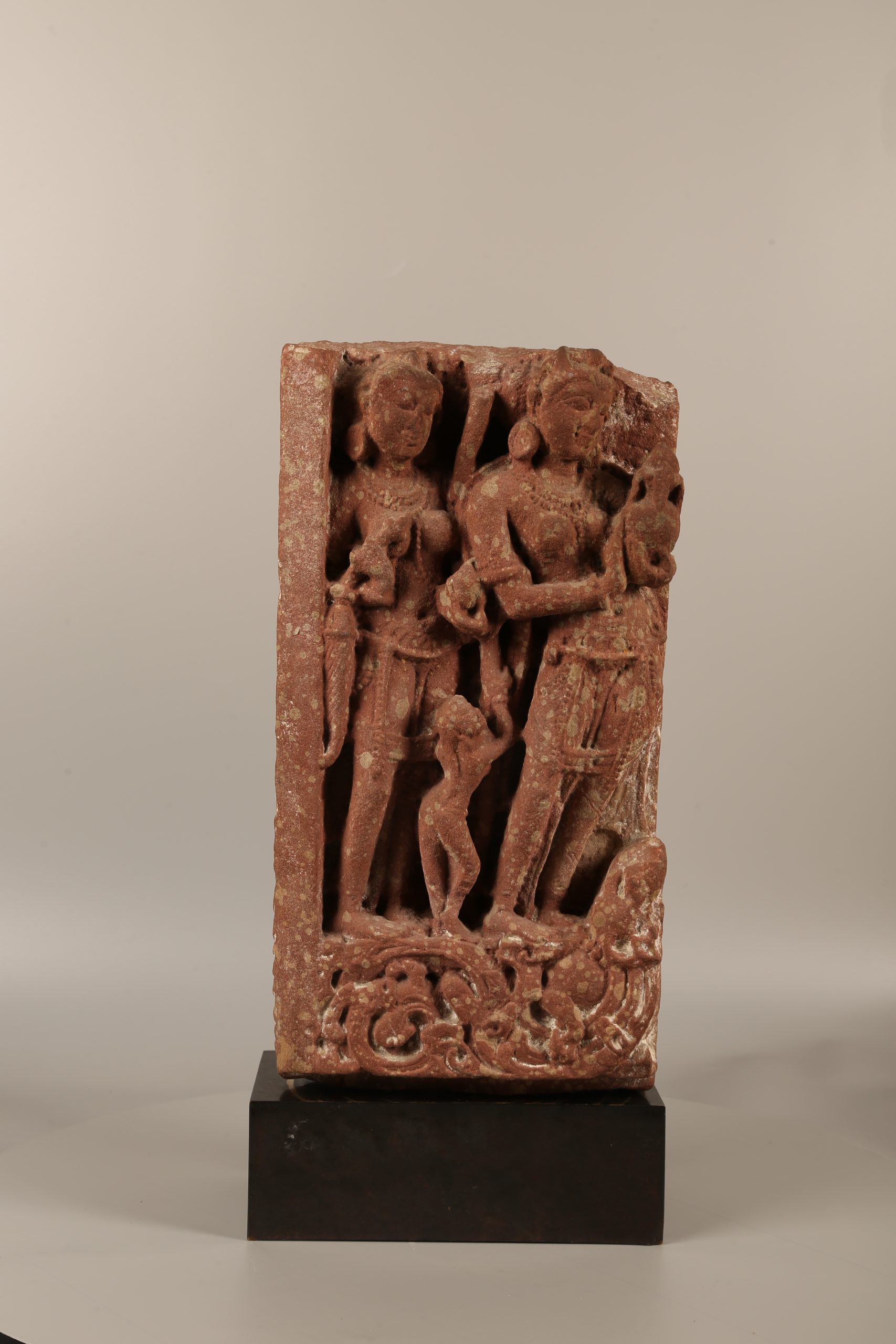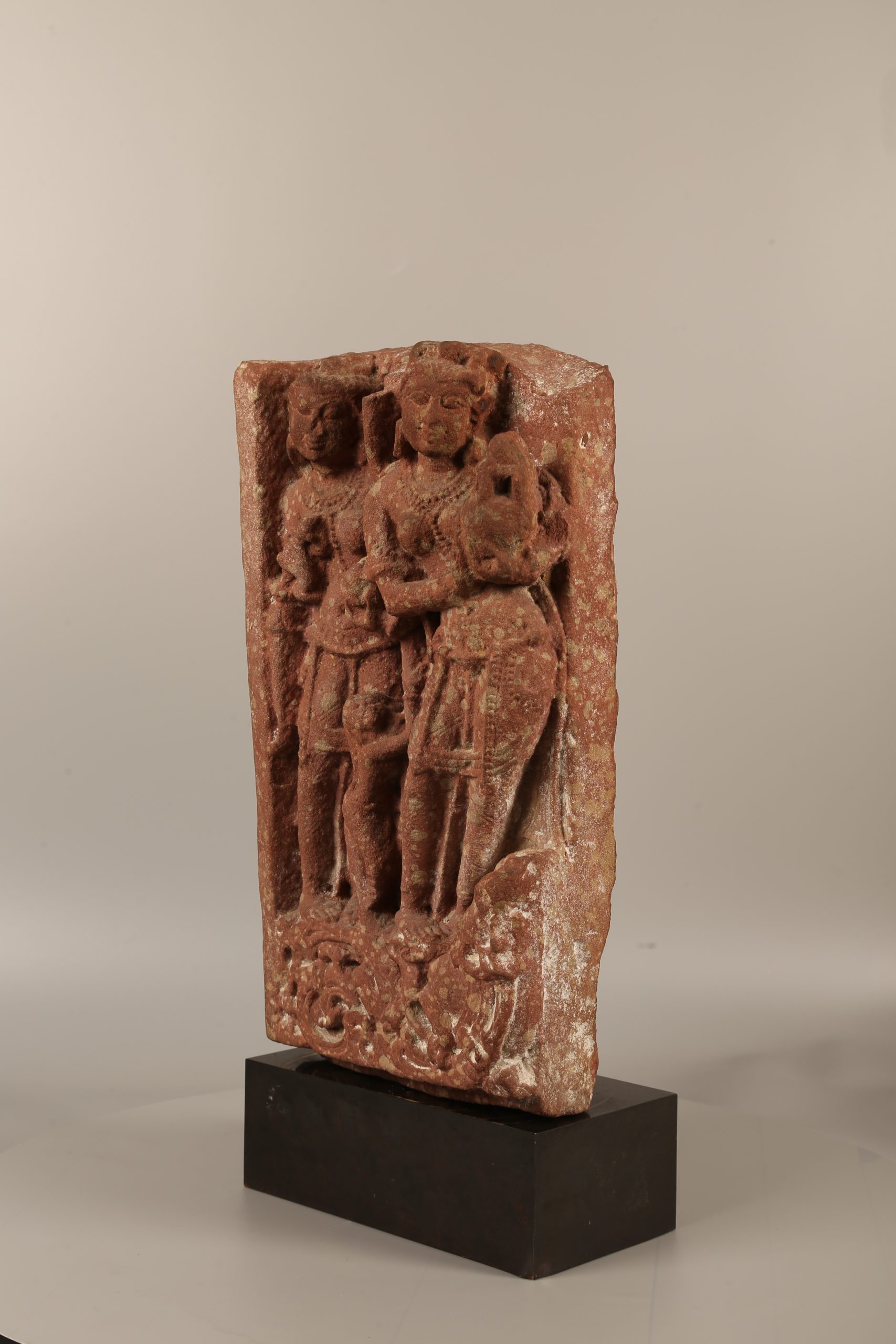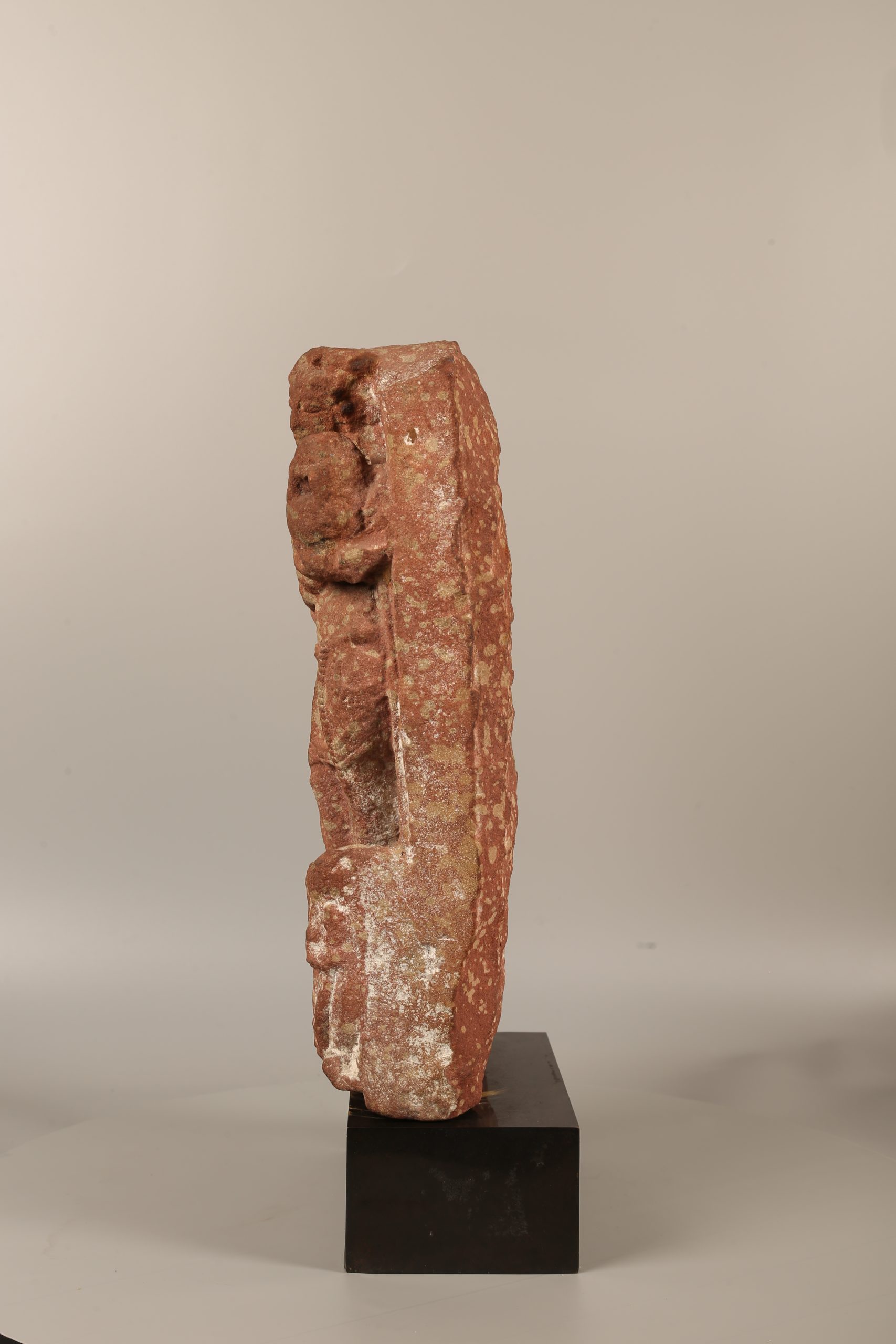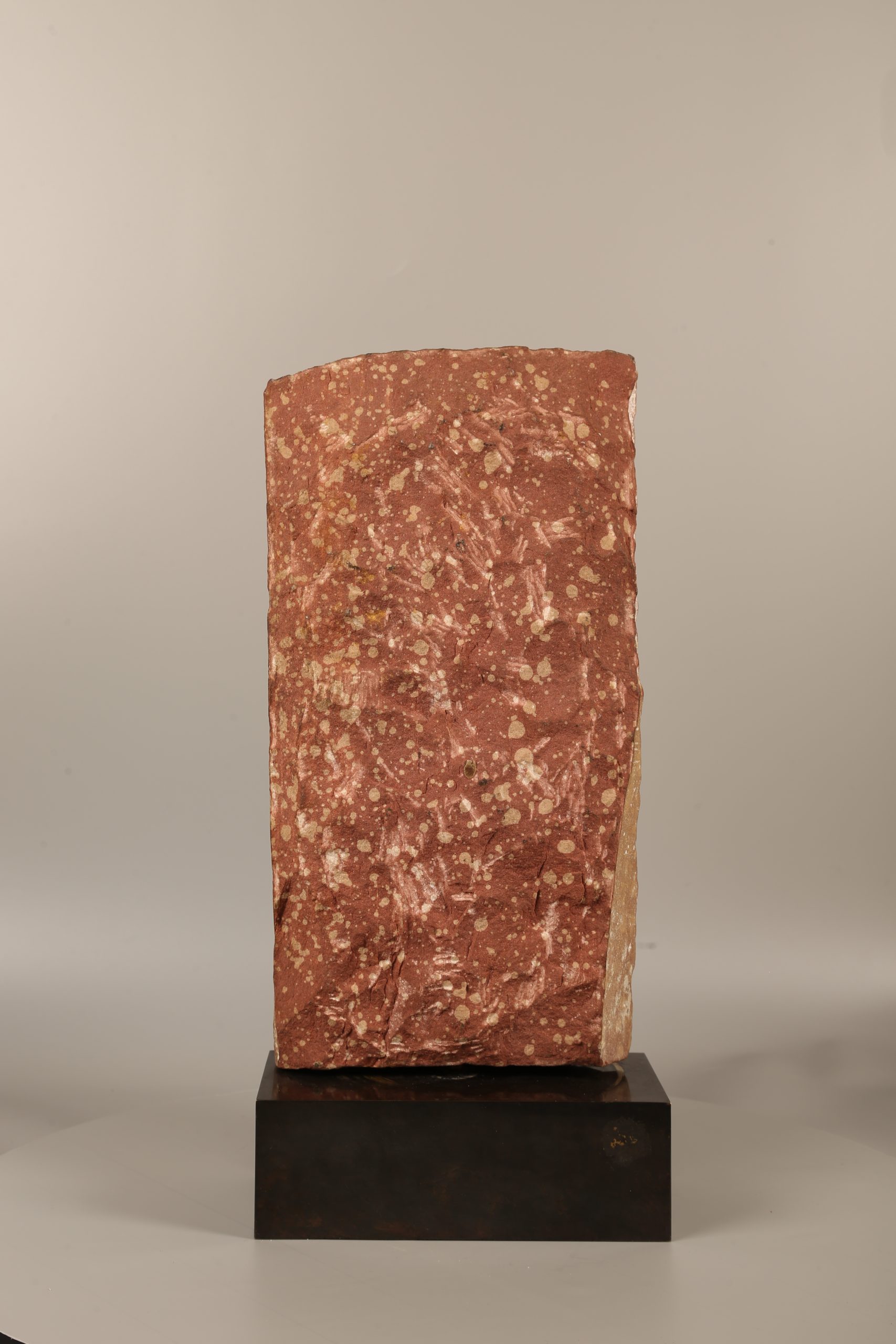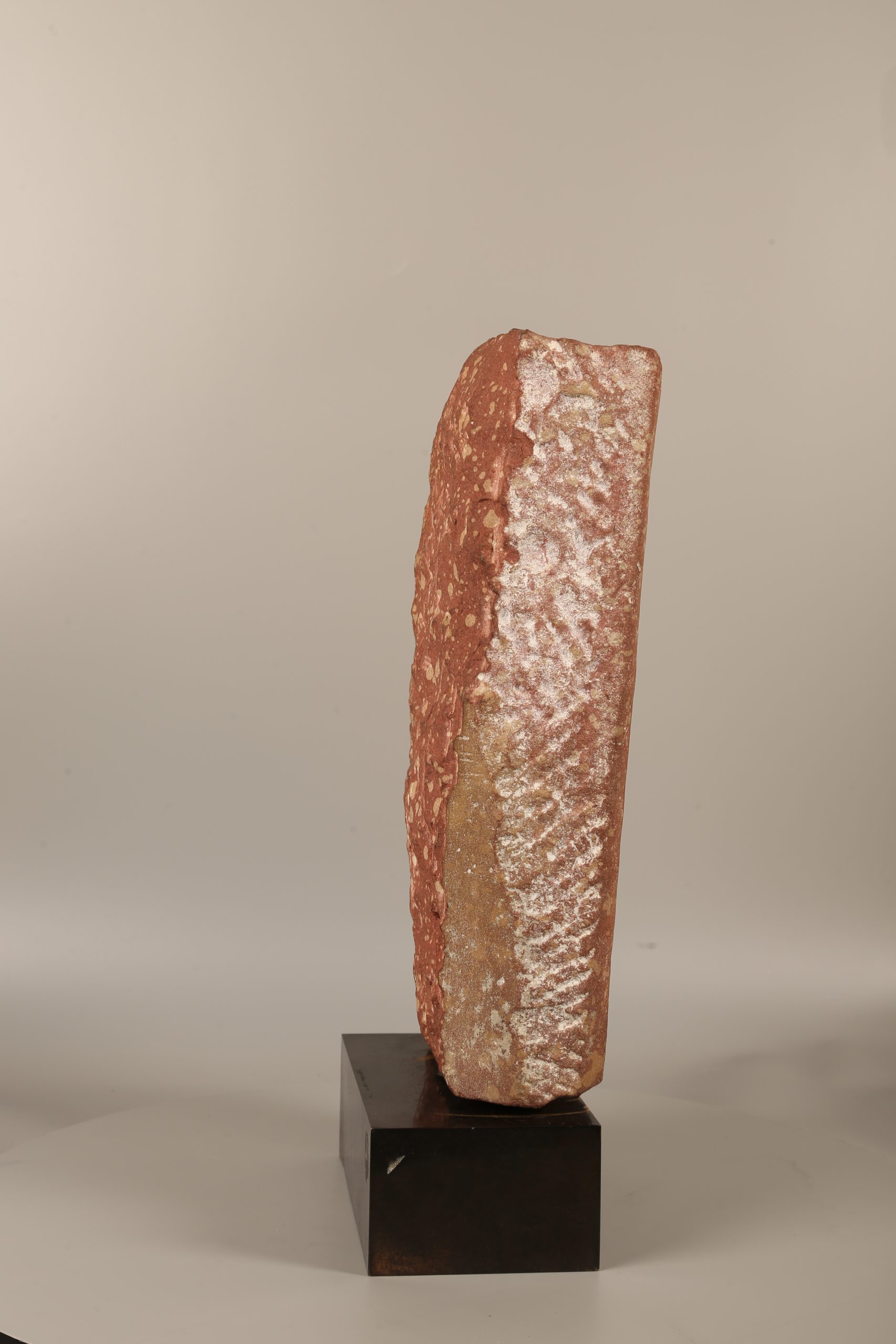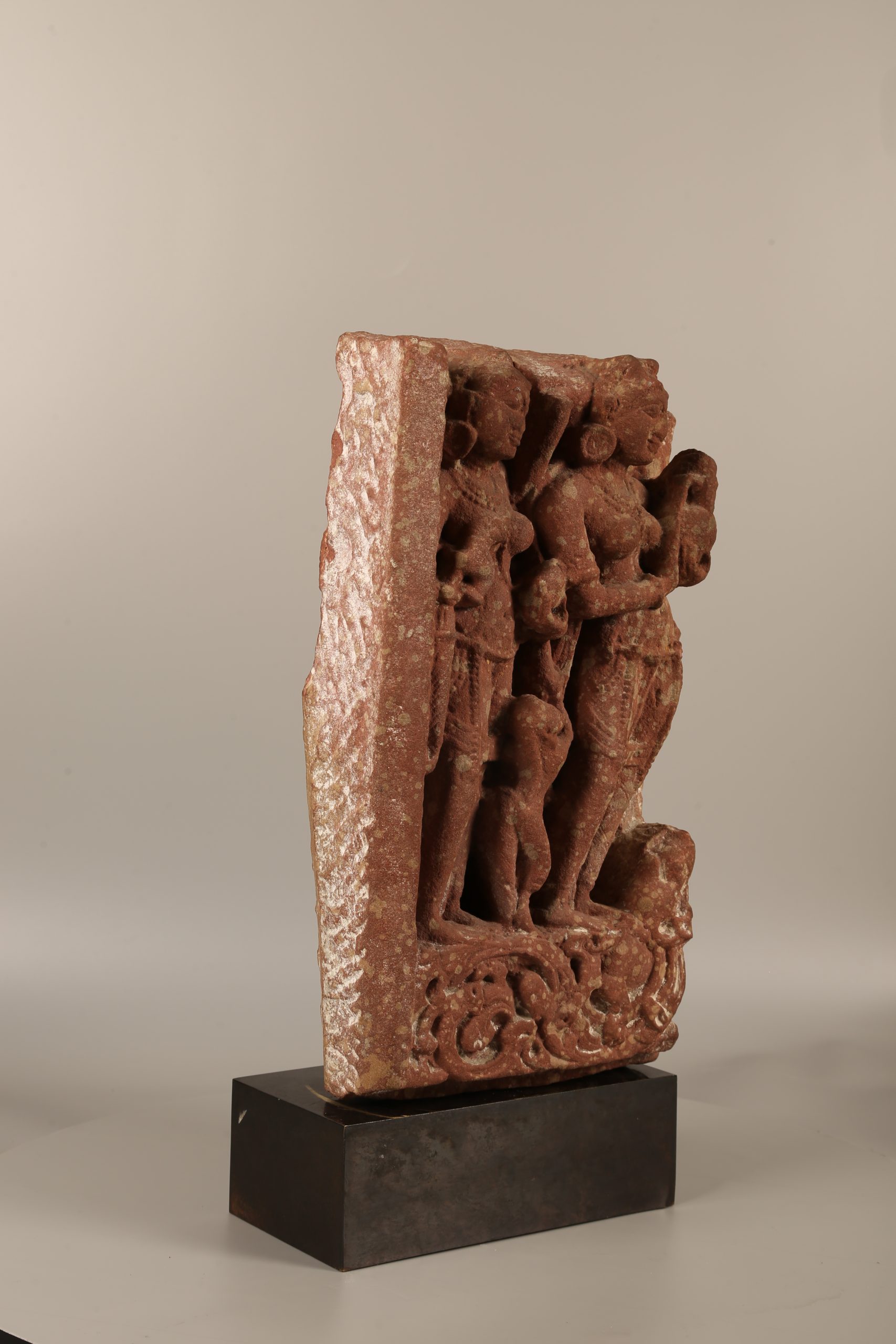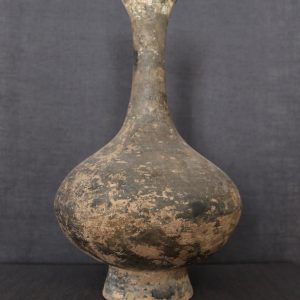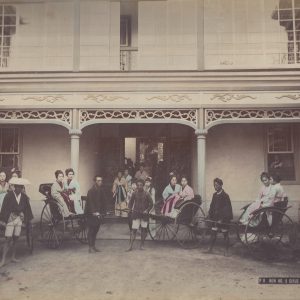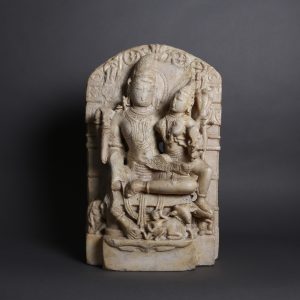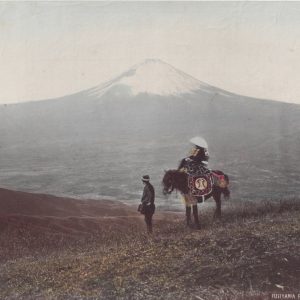Ganga
Red sandstone
India, Uttar Pradesh
10th – 11th century
H. 34 cm or 13 ⅜ in
360° View
Description
Beautiful stele with a sensual and delicate iconography featuring the goddess Gaṇgā and her attendants. Sculpted in a mottled red sandstone typical of Northern India, it is 34 cm high (or 13 ⅜ in) and bears witness to the refinement of the works of the medieval period (10th-11th century).
In Hindu temples, Gaṇgā, the tutelary deity of the waters of the Ganges River, appears at the bottom of the sanctuary doors jambs. She faces her affluent Yamunā, another great Indian river deity. Their representations are linked to the idea of purification before entering the sacred place.
Here the goddess is standing on her mount, a makara: an aquatic creature half crocodile and half fish. She carries in her hands a vase of abundance.
She is accompanied by a female attendant holding a fly-whisk and a small purification vase, an allusion to the ritual baths in the sacred river. At their feet is another small assistant, holding the shaft of a probable parasol showing the high rank of her mistress.
Gaṇgā and her attendant are both depicted according to traditional Indian beauty canons. They display sinuous curves and round breasts. They wear the rich ornaments characteristic of medieval India, consisting of large pearl necklaces, bracelets and large earrings. They are dressed in long dhotî whose folds cascade down to the ankles. The clothes are held at their waists by intricate belts richly decorated with pearls and festoons. Finally, we appreciate the great delicacy of the ornamental part, with lotus foliage scrolls with jagged leaves.
This very beautiful work was loaned to the Art Institute of Chicago between 1980 and 1985 and was then offered for sale in London in 1991.

